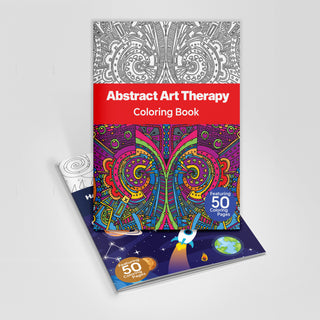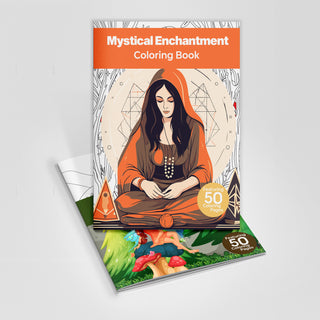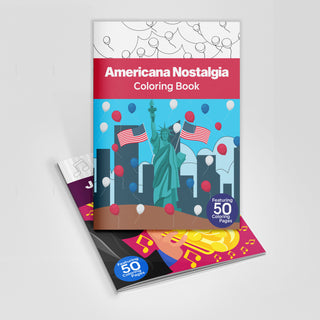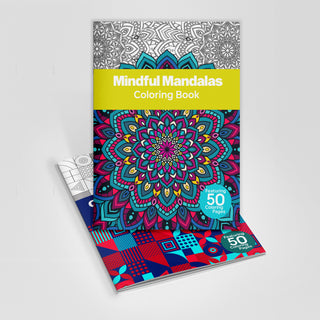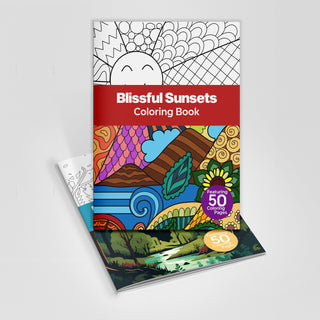Exploring mandala has captivated people across the globe for centuries.
These intricate circular designs have been used by cultures around the world as a tool for meditation, self-discovery, and spiritual growth.
In recent years, the popularity of mandalas has skyrocketed, with many people turning to mandala coloring books as a means of relaxation, creativity, and mindfulness.
At their core, mandalas are a representation of the universe, and their circular shape symbolizes the cyclical nature of life.
The intricate patterns and geometric shapes within mandalas are thought to represent various aspects of the human experience, such as the interconnectedness of all things or the balance between light and dark.
Mandalas are believed to have the power to calm the mind, reduce stress, and promote a sense of inner peace.
This is where mandala coloring books come in.
By coloring in the intricate designs of mandalas, individuals can tap into the therapeutic benefits of this ancient art form.
Coloring mandalas can be a powerful way to slow down, quiet the mind, and focus on the present moment.
The repetitive nature of coloring within the lines can be incredibly soothing, and the act of filling in each shape can provide a sense of accomplishment and satisfaction.
In addition to providing a sense of calm, mandala coloring books can also promote creativity.
With no rules or guidelines to follow, coloring mandalas allows individuals to experiment with color, texture, and design.
Many people find that coloring mandalas sparks their imagination and inspires them to explore their own artistic abilities.
But perhaps the most significant benefit of mandala coloring books is their ability to promote mindfulness.

Mindfulness is the practice of being fully present in the moment, and it has been shown to have numerous physical and mental health benefits.
By focusing on the present moment while coloring mandalas, individuals can cultivate a greater sense of awareness and self-discovery.
Some even find that coloring mandalas can be a form of meditation, allowing them to connect with their inner selves on a deeper level.
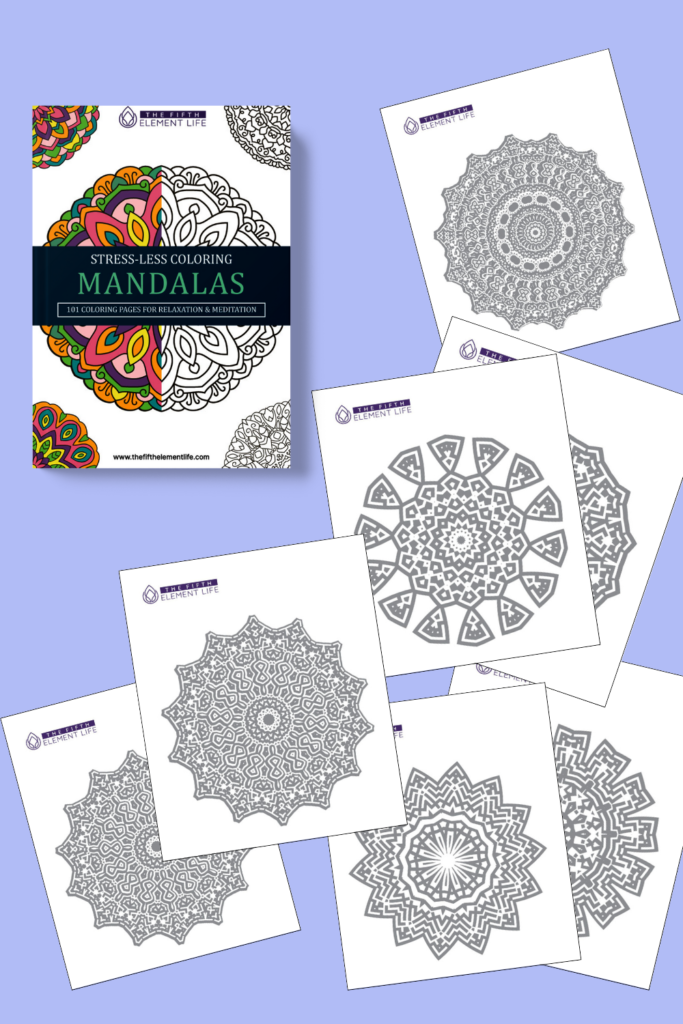
Whether used as a tool for meditation, artistic expression, or spiritual guidance, mandalas offer a powerful way to connect with the universe and tap into the wisdom of the ages.
The Art Of Mandala
Mandala, a Sanskrit word meaning "circle," is a symbol of the universe in Hindu and Buddhist cultures.
RELATED: 210 Inspiring Quotes To Motivate Men
The intricate circular designs are made up of geometric shapes, patterns, and symbols that represent various aspects of the cosmos.
Mandalas have been used for centuries as a tool for meditation and spiritual practice, and their use in coloring books has become a way for people to engage with this ancient art form in a contemporary way.
Why Mandala Art Is Special
Mandala art is a unique and fascinating form of art rooted in hundreds of years of history.
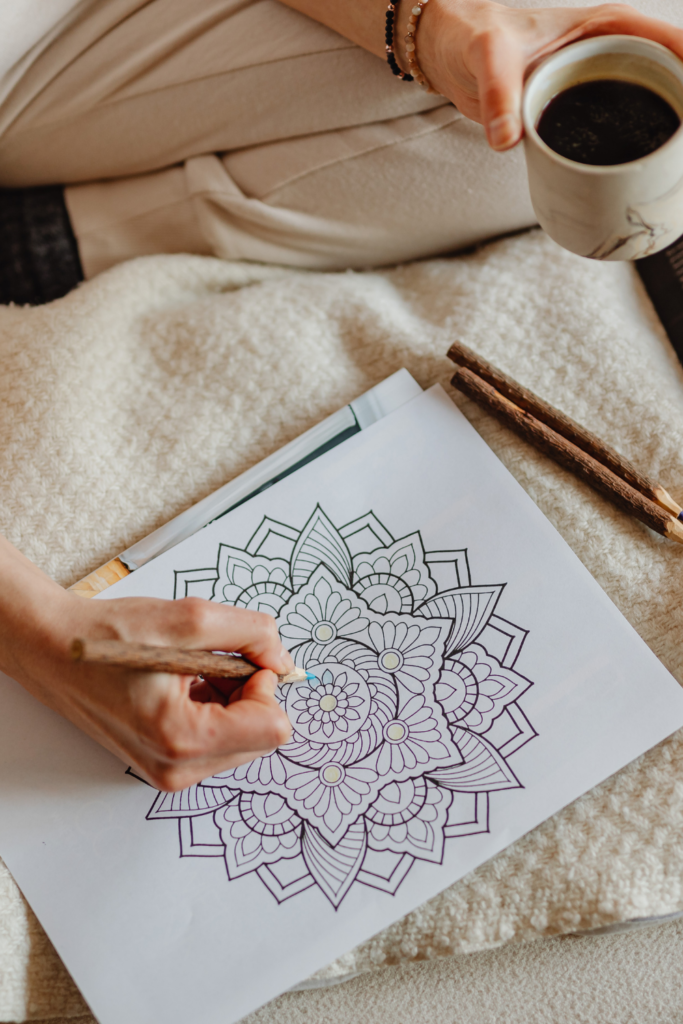
Here’s what makes mandala art so special:
- Symbolism: Mandalas are rich in symbolism, featuring intricate patterns and shapes that represent different aspects of the universe and the human experience. By engaging with these symbols, we can tap into their meanings and gain a deeper understanding of ourselves and the world around us.
- Meditation: Mandalas are often used as a tool for meditation and mindfulness. The act of coloring or creating a mandala can be a meditative process that helps to reduce stress and anxiety and promote relaxation and focus.
- Universal Appeal: Mandalas have a universal appeal that transcends cultures and religions. They can be found in many different traditions around the world, from Native American sand paintings to Tibetan thangkas.
- Creative Expression: Mandalas provide a space for creative expression and experimentation. They are designed to be accessible to anyone, regardless of their artistic ability, and the focus is on the process of creation rather than the final product.
- Healing Properties: Mandalas are believed to have healing properties, both for the creator and the viewer. They can be used as a tool for self-discovery and personal growth, helping us to tap into our inner wisdom and connect with our higher selves.
Symbolism In Mandalas
Mandalas have a rich symbolic history and are considered to be a powerful tool for meditation and self-discovery.
Here are some of the common symbols found in mandalas:
- Circle: The circle is the most basic element of a mandala. It represents wholeness, infinity, and the cyclical nature of life.
- Center: The center of a mandala is the focal point and represents the Self, or the innermost part of our being.
- Sun And Moon: The sun and moon represent the balance of opposites, such as light and dark, day and night, and yin and yang.
- Lotus Flower: The lotus flower is a symbol of enlightenment, purity, and spiritual growth. It also represents the journey towards the center of the self.
- Four Directions: Many mandalas are divided into four quadrants, each representing a different direction (north, south, east, and west). This symbolizes the interconnectedness of all things.
- Geometric Shapes: The use of geometric shapes in a mandala represents the order and structure of the universe.
- Animals: Mandalas often feature animal motifs, such as birds, elephants, and snakes. These animals symbolize different qualities or energies, such as wisdom, strength, and transformation.
-
Colors: The colors used in a mandala have specific meanings.
- Red: Passion, energy, and vitality.
- Orange: Creativity, enthusiasm, and warmth.
- Yellow: Joy, optimism, and happiness.
- Green: Growth, harmony, and balance.
- Blue: Peace, tranquility, and stability.
- Purple: Spirituality, intuition, and inner wisdom.
- Pink: Love, compassion, and nurturing.
- White: Purity, innocence, and clarity.
- Black: Strength, power, and mystery.
- Gold: Wealth, prosperity, and abundance.
RELATED: 210 Powerful Law of Attraction Manifestation Quotes
By coloring a mandala, you can engage with these symbols and tap into their meaning.
This can help you gain a deeper understanding of yourself and the world around you.
The Benefits Of Mandala Coloring Books
Mandala coloring books have gained popularity for their therapeutic benefits.
Many people find coloring mandalas to be a relaxing and calming activity that can help reduce stress and anxiety.
The repetitive nature of the patterns can also help to focus the mind and promote mindfulness, making it a great way to practice meditation for those who find it challenging to sit still and meditate in traditional ways.
Moreover, coloring mandalas can also stimulate creativity and provide a sense of accomplishment.
When people color in a mandala, they have the freedom to choose their own colors and patterns, allowing for a personalized expression of their individuality.
Completing a mandala coloring page can also provide a sense of achievement and pride, boosting self-esteem and confidence.
Who Can Benefit From Mandala Coloring Books?
Mandala coloring books are for everyone, regardless of age or skill level.
They can be enjoyed by children and adults alike, providing a fun and creative activity for families to do together.
Children can benefit from coloring mandalas as it can help to develop fine motor skills, hand-eye coordination, and creativity.
Adults can use mandala coloring as a way to unwind after a long day or as a tool for mindfulness and meditation.
Mandala coloring books can also be beneficial for those who suffer from mental health issues such as anxiety, depression, and PTSD.
Coloring mandalas can help to reduce symptoms of these conditions by providing a relaxing and calming activity that can distract the mind from negative thoughts and emotions.
Different Types Of Mandala Coloring Books
Mandala coloring books come in many different styles and designs.
Some books feature traditional mandalas inspired by Hindu and Buddhist culture, while others incorporate more modern patterns and themes.
There are also mandala coloring books specifically designed for children, featuring simpler designs and larger spaces to color in.
Here are some popular types of mandala coloring books:
- Traditional Mandala Coloring Books
These books feature intricate circular designs inspired by traditional mandalas from Hindu and Buddhist cultures. They often incorporate complex geometric patterns and symbols, and can be quite challenging to color in. Traditional mandala coloring books are great for those who are looking for a meditative and challenging activity.

- Nature-Inspired Mandala Coloring Books
These books feature mandalas inspired by nature, such as flowers, animals, and landscapes. They often incorporate organic shapes and patterns, and can be quite intricate and detailed. Nature-inspired mandala coloring books are great for those who enjoy the beauty of the natural world and want to incorporate it into their coloring practice.
- Geometric Mandala Coloring Books
These books feature mandalas made up of geometric shapes, such as triangles, squares, and circles. They often have a more modern and abstract feel, and can be quite challenging to color in. Geometric mandala coloring books are great for those who enjoy puzzles and brain teasers, as well as those who want to explore the beauty of geometry.
- Mindfulness Mandala Coloring Books
These books feature mandalas specifically designed for mindfulness and meditation. They often incorporate positive affirmations and quotes, and may have simpler designs with larger spaces to color in. Mindfulness mandala coloring books are great for those who are looking for a relaxing and therapeutic activity that can also help to promote positive thinking.
Choosing The Right Mandala Coloring Book
When choosing a mandala coloring book, it's important to consider your own interests and preferences.
If you enjoy traditional art forms and challenging activities, a traditional mandala coloring book may be the right choice for you.
If you prefer more modern designs and abstract patterns, a geometric mandala coloring book may be more your style.
If you're looking for a relaxing and meditative activity, a mindfulness mandala coloring book may be the perfect fit.
It's also important to consider the level of difficulty when choosing a mandala coloring book.
Some books have very intricate designs that can be quite challenging to color in, while others have simpler designs that are more suitable for beginners.
If you're new to mandala coloring, it may be best to start with a simpler book and work your way up to more complex designs as you become more comfortable.
Tips For Coloring Mandalas
Knowing how to approach your mandala coloring book can be tricky.
Here are some tips for coloring mandalas:
- Choose the Right Coloring Materials
The right coloring materials can make a big difference in the quality of your finished mandala. Choose high-quality colored pencils, markers, or gel pens that have a wide range of colors and shades.
RELATED: 95 Of Don Miguel Ruiz’s Best Quotes
- Start With Light Colors
When coloring a mandala, it's best to start with light colors and work your way up to darker colors. This allows you to build up layers of color and create depth and dimension in your design.

- Blend Colors
Blending colors can help to create a more cohesive and harmonious design. Use a blending tool such as a blending pencil or blender marker to blend different colors together.
- Experiment With Different Techniques
There are many different techniques you can use when coloring mandalas, such as shading, stippling, and hatching. Experiment with different techniques to find the ones that work best for you.
- Take Your Time
Coloring a mandala can be a meditative and relaxing activity, so take your time and enjoy the process.
Frequently Asked Questions
What Is A Mandala?
A mandala is a circular design featuring intricate patterns and shapes. It has its roots in Hinduism and Buddhism and is often used as a tool for meditation and self-discovery.
What Is The Purpose Of Coloring Mandalas?
Coloring mandalas can be a meditative and relaxing activity that helps to reduce stress and anxiety. It can also help to improve focus and concentration and promote mindfulness.
Do I Need To Be Artistic To Color Mandalas?
No, you do not need to be artistic to color mandalas. Mandalas are designed to be accessible to anyone, regardless of their artistic ability. The focus is on the process of coloring rather than the final product.
Are There Any Rules For Coloring Mandalas?
No, there are no hard and fast rules for coloring mandalas. You can use any colors you like and color inside or outside the lines. The goal is to engage with the process of coloring and let your creativity flow.
Can Coloring Mandalas Help With Mental Health?
Yes, coloring mandalas can be a helpful tool for managing mental health. It has been shown to reduce stress, anxiety, and depression and promote mindfulness and relaxation.
How Were Mandalas Used In Different Cultures?
Mandalas are an ancient and universal symbol that have been used by many different cultures throughout history.
These circular designs are often intricately patterned and symbolically rich, and they have been used for a variety of purposes.
The following will explore the use of mandalas in different cultures and how they were utilized for various spiritual, artistic, and healing purposes.
Hinduism And Buddhism
One of the most well-known uses of mandalas is in Hinduism and Buddhism.
Mandalas are a fundamental aspect of both of these religions, and they are often used as a tool for meditation and spiritual development.
In Hinduism, mandalas are associated with the concept of yantras, which are geometrical designs that represent the cosmos.
Mandalas are often used as a focal point for meditation, with the intricate patterns and symbols helping to calm the mind and focus the attention.
In Buddhism, mandalas are also used as a tool for meditation and spiritual development.
Tibetan monks create intricate sand mandalas that can take weeks or months to complete.
These mandalas are seen as a visual representation of the universe and are used to aid in the attainment of enlightenment.
The process of creating a sand mandala is seen as a form of meditation, and the finished mandala is often destroyed as a reminder of the impermanence of all things.
Native American Culture
Mandalas are also found in Native American culture, where they are known as medicine wheels.
Medicine wheels are circular structures that feature various symbols and colors, and they are used for healing and spiritual purposes.
In many Native American traditions, the medicine wheel represents the cycle of life and the four directions.
It is often used as a tool for meditation and spiritual guidance, and individuals may use the medicine wheel to connect with their ancestors or seek guidance from the spirits.
Christianity
Mandalas can also be found in Christian art and symbolism, particularly in the form of the rose window.
Rose windows are circular stained glass windows that are often found in churches and cathedrals.
They are typically intricately designed, featuring various symbols and motifs, and they are often used to represent the divine.
The circular shape of the rose window is thought to symbolize the unity of all things and the perfection of the divine.
Artistic Expression
Mandalas are not only used for spiritual or religious purposes; they have also been used as a form of artistic expression.
In many cultures, mandalas are seen as a symbol of creativity and artistic skill.
Artists may create mandalas as a way to express their own unique style or as a way to connect with their inner selves.
Mandala coloring books, in particular, have become increasingly popular as a way for individuals to engage in artistic expression and promote mindfulness and relaxation.

Where Can I Find Mandala Coloring Books?
Mandala coloring books are widely available both online and in stores. You can find them in bookstores, craft stores, and online retailers.
For a budget-friendly and convenient option, we highly recommend an easy accessible, online version!
Continue Reading ????????: 124 Caring Quotes To Show Compassion To Yourself & Others


